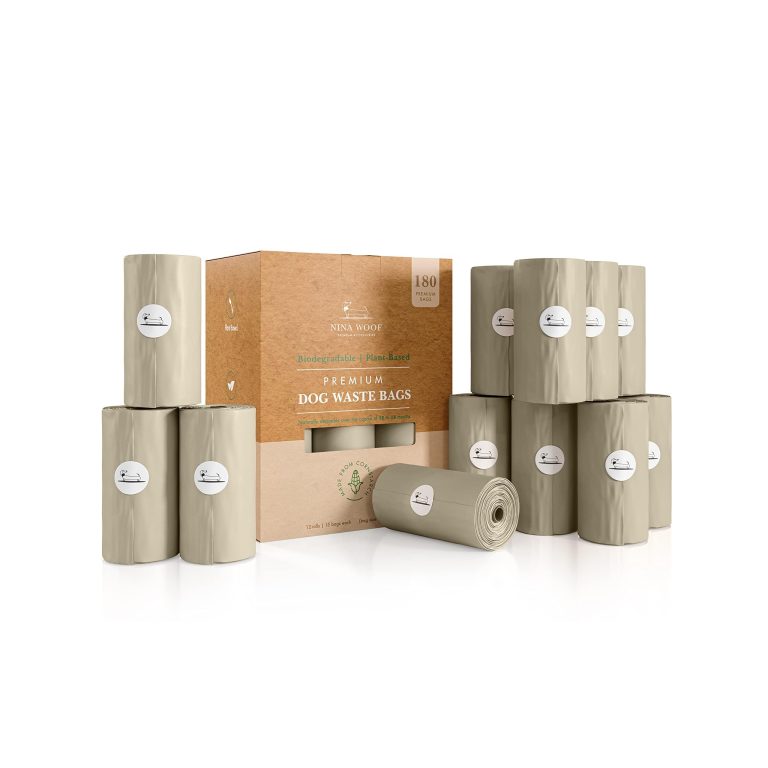The Role of Antioxidants in Dog Nutrition
The incorporation of antioxidants into a dog’s diet represents a pivotal aspect of promoting their overall health and longevity. Antioxidants, those remarkable compounds known for their ability to counteract the deleterious effects of oxidative stress, play an essential role in safeguarding cellular integrity within canines. By neutralizing harmful free radicals—unstable molecules generated through metabolic processes and environmental factors—these agents provide not merely a protective barrier but also a flourishing environment for optimal physiological function. It’s a well-established tenet in veterinary nutrition that, akin to their human counterparts, dogs derive substantial benefits from an array of antioxidant-rich compounds, drawing the delicate balance necessary for maintaining robust health.
In the realm of canine wellness, antioxidants contribute significantly to the modulation of immune responses, benefiting young pups and aging companions alike. With the immune system often beset by age-related declines, antioxidants like vitamins C and E, as well as beta-carotene, emerge as vital allies. Their protective prowess is characterized by the enhancement of immune function, thus cultivating resilience against a myriad of ailments that plague our canine friends. Moreover, these compounds have shown promise in mitigating the progress of chronic diseases, such as arthritis and certain forms of cancer, thereby reinforcing the pivotal role of preventive care.
By promoting healthy inflammatory responses and decreasing the risk of chronic diseases, antioxidants not only jacket the body against the insidious effects of aging but also bestow a certain vivacity upon the canine spirit. For instance, studies have elucidated the correlation between a diet rich in antioxidants and improved cognitive function in dogs, particularly noteworthy in senior dogs, where cognitive decline often manifests. The notion that a mere dietary adjunct could illuminate the dimming faculties of age embodies the very essence of the intersection between nutrition and vitality.
Nevertheless, the quest for the golden mean in feeding practices must be underscored; a diet suffused with antioxidants alone will not suffice. Temporal dimensions of dietary needs must be acknowledged, for the nutritional requirements of a rambunctious puppy differ markedly from those of a docile elder. Puppies, breeding and growing at an astonishing rate, necessitate a nutrient-dense regimen to satiate their appetites for growth and play, whereas seniors may thrive on a diet tailored to their specific health conditions, often requiring expert guidance and meticulous planning.
In our pursuit of optimizing canine nutrition, it is essential to acknowledge the intrinsic value of varied food sources. A palette rich in fruits and vegetables, such as blueberries, spinach, and sweet potatoes, serves to imropve a dog’s diet not only through flavor but through a spectrum of antioxidants and other pivotal nutrients. Yet, discerning pet owners may also find themselves tempted by the appeal of homemade diets, crafting meals infused with love and attention. In doing so, attention to detail is paramount—ensuring that the proportions of proteins, fats, carbohydrates, and those all-important antioxidants harmonize to form a balanced composition that nourishes both the body and soul of their treasured companions.
Amidst the complexities of canine nutrition, it becomes an imperative duty for caretakers to remain vigilant against common dietary challenges. By embracing a holistic perspective and acknowledging the important role that antioxidants play within the broader spectrum of dietary needs, we pave the way for a thriving existence that mirrors the exuberance inherent in our canine companions. To embark on this journey of nutritional discovery embodies not just an act of responsibility, but a celebration of the profound bond shared between humans and dogs, one nurtured through the shared pursuit of health and happiness.

Common sources of antioxidants in dog food
The dog food landscape is vibrant and varied, presenting a tapestry of choices that serve as sources of antioxidants, critical ingredients in the quest for optimal canine health. Among the most esteemed contenders in this arena are fruits and vegetables, laden with the very compounds that facilitate the quelling of oxidative stress. Berries—particularly blueberries and cranberries—stand as exemplars, bursting with antioxidants while offering a succulent flavor profile that delights the canine palate. These members of the gastronomic family not only enrich the diet visually and texturally but also elevate the nutritional integrity of meals by bestowing properties that bolster immune systems and deter chronic ailments.
Green leafy vegetables, such as spinach and kale, further enrich the fabric of canine nutrition, providing their own unique assortment of vitamins and minerals alongside potent antioxidants. Not simply a garnish upon the dinner plate, these vegetables act as nutrient-rich foundations for a well-rounded diet, embodying the essence of life and vitality in every vibrant leaf. The philosophical musings of achieving a symbiotic relationship between nature and nourishment finds expression through these vivacious greens, which, when included in meals, infuse energy and resilience into the lives of our cherished companions.
The aforementioned fruits and vegetables can be seamlessly integrated into commercial dog foods, which often tout their antioxidant-rich formulations prominently on labels. However, pet owners would be remiss to overlook the merits of whole food ingredients within these products; ingredients like sweet potatoes, carrots, and pumpkin not only provide essential carbohydrates but also deliver an added antioxidant punch. Thus, when selecting between myriad kibbles or canned options, discerning pet owners should investigate the ingredient lists for recognizable whole foods that echo the virtues of natural diets.
Moreover, when the notion of homemade diets arises, pet owners can harness the potential of antioxidants with remarkable ease. Crafting meals from fresh meats, whole grains, and an array of colorful fruits and vegetables ensures that dogs are not only consuming quality proteins but are also receiving the full spectrum of antioxidant-rich components necessary for maintaining health. Recipes that include ingredients like salmon, which is rich in omega-3 fatty acids, combined with an assortment of veggies, can transform mealtime into a feast for both the body and the senses. It is essential, however, to engage with veterinary nutritionists to ensure that such diets are balanced, avoiding the pitfalls of deficiencies that may arise from impulsive culinary creativity.
The potent synergy created by combining various antioxidant sources—be it through commercial feeds enriched with nutrient-dense components or through thoughtful homemade recipes—illuminates the inherent beauty found in the myriad choices available to dog owners. It reveals a truth that transcends mere feeding; it unveils the artistry of care which manifests in the mindful selection of nurturing ingredients. While some may lean towards the convenience of processed options, there exists a wealth of knowledge and understanding in the art of supplying a dog’s nutrients via nature’s bounty. By weaving together a tapestry of diverse ingredients, caretakers not only enrich the diets of their dogs but further reinforce their lifelong commitment to fostering the health and well-being of their four-legged friends.
As the culinary landscape for our canine companions continues to evolve, the responsibility to scrutinize and appreciate the sources of antioxidants becomes paramount. An engagement with nutritious and wholesome ingredients not only fortifies the body against the relentless march of time but also cultivates a profound bond steeped in love, attentiveness, and an unwavering commitment to the dog’s well-being and happiness. In the grand narrative of canine nutrition, each meal becomes a chapter, every ingredient a word, contributing to the ever-unfolding story of health and vitality shared between humans and their beloved dogs.

Antioxidants and specific health issues
In addressing the myriad health challenges faced by our canine companions, one cannot overlook the remarkable capacity for antioxidants to influence and mitigate specific health issues prevalent in dogs. These compounds, while celebrated for their general health benefits, assume a more profound role in the context of particular conditions that besiege our four-legged friends. A myriad of studies and anecdotal evidence underscore the interplay between dietary antioxidants and conditions such as cancer, cognitive dysfunction, arthritis, and heart disease, revealing how a proactive dietary strategy can serve as a formidable ally in the battle for canine health.
Starting with the shadow of one of the most feared ailments, cancer presents a formidable adversary in canine health, often eliciting feelings of helplessness among loving guardians. Here, antioxidants such as vitamin E and selenium emerge as crucial components of a well-structured diet, exhibiting their potential to reduce oxidative stress, which has been implicated in the carcinogenesis process. Research has illustrated that diets abundant in these antioxidants may not only reduce the risk of developing certain types of cancer but may also serve to imropve the efficacy of conventional treatments. For instance, a study conducted by veterinary oncologists suggests that dogs diagnosed with cancer who were fed a diet supplemented with antioxidants showed a more favorable response to treatment than those on conventional diets alone. This underscores the concept that dietary choices can coalesce with medical interventions, navigating a holistic approach to health.
Furthermore, cognitive dysfunction syndrome—a condition reminiscent of dementia in humans—has become increasingly recognized among aging dogs. The neurological implications of oxidative stress present a compelling argument for the inclusion of antioxidants in the diets of senior dogs. Nutrients like vitamin E and omega-3 fatty acids found in fish oils contribute to neural health and memory function. Observational studies have demonstrated that canines supplemented with these antioxidants showcase notable improvements in cognitive ability, underlining the notion that a carefully curated diet can serve as a beacon of hope for enhancing the quality of life in our elder companions.
Arthritis, another common affliction that constrains the grace and vigor with which our dogs navigate their worlds, also stands to benefit from the incorporation of antioxidants in their diet. Omega-3 fatty acids, particularly those extracted from fish or flaxseed, are lauded for their anti-inflammatory properties, which work in concert with antioxidants to mitigate pain and enhance mobility. Through substantial therapeutic efficacy, a diet rich in these compounds can transform the canine experience from one of stagnation and discomfort to a renewed zest for life with every jubilant leap and bound. As a renowned veterinarian once noted, “An ounce of prevention is worth a pound of cure,” and herein lies an essential truth about the role of dietary vigilance in combating the deteriorative effects of age and disease.
Moreover, heart disease, an insidious condition that often escapes early detection, prompts an urgent reevaluation of the nutritional tenets that enrich a dog’s life. Antioxidants like coenzyme Q10 and taurine, frequently highlighted in relation to cardiac health, serve to bolster heart function and safeguard against oxidative damage. Nutritional studies have showcased the ability of a diet inclusive of these compounds not only to prevent but potentially reverse certain types of heart ailments, igniting a fervent interest among pet owners to take charge of their companions’ diets, thus stitching together the fabric of prevention and wellness.
As one traverses the intricate landscape of canine health, it becomes increasingly evident that the role of antioxidants extends beyond mere supplemental value; they serve as a pivotal cornerstone in a broader, more complex nutritional strategy. In their thoughtful integration into everyday meals, dog owners can refrain from viewing diet as a singular or isolated element but rather as an intricate tapestry woven from the threads of knowledge, attentiveness, and love. The act of feeding thus transforms from a mundane chore to an enriching ritual revered as sacred, enabling proponents of canine health to become true custodians of their pets’ wellness—for in each decision lies the potential to nurture and fortify those we hold dear against the capricious whims of fate.
Guidelines for incorporating antioxidants in dog diets
When contemplating the incorporation of antioxidants into a dog’s diet, caregivers must embrace a thoughtful and discerning approach, one that marries the complexities of canine nutritional needs with the rich tapestry of antioxidant sources irresistible to both palate and spirit. The intricate dance of food selection resembles a harmonious composition, wherein each ingredient plays a vital role, creating a symphony of nourishment that resonates through the very essence of a dog’s well-being. This culinary journey requires not only knowledge but also a certain poetic sensibility—a recognition that nourishment is as much about the heart as it is about the body.
To begin, awareness of a dog’s specific life stage becomes paramount; the nutritional needs of a sprightly puppy undoubtedly diverge from those of a regal senior. For the vigorous young pup, replete with boundless energy, the emphasis ought to be on protein-rich, antioxidant-laden foods that can fuel their formative activities. Ingredients like chicken or lamb paired with blueberries and carrots create a pleasing mélange that sustains their zest while fostering healthy growth. On the other hand, the illustrious elder dog may benefit from a more calculated approach—incorporating softer, more palatable forms of antioxidants that lend support to weary joints and aging minds. This nuanced understanding allows for the tailoring of diets to align with the distinct needs bestowed by age, maintaining the vitality of each cherished life stage.
When pondering the selection of commercial dog foods, one must become an astute detective, scouring ingredient lists with a critical eye. Look for whole foods that not only boast antioxidant properties but also provide a lexicon of nutrients that work synergistically to promote overall health. Foods fortified with fruits such as cranberries and spinach, alongside dog-friendly grains like quinoa or barley, resonate with the promise of a nourishing experience that stretches beyond mere sustenance. Moreover, one must remain vigilant against the deluge of trendy diets that may ensnare pet owners in their alluring rhetoric yet neglect the foundational requirements of balanced nutrition.
Conversely, for the judicious chef at heart who yearns to conjure meals from the very essence of nature, the homemade route lies open and replete with possibility. Crafting a dog’s diet at home involves an embrace of creativity, where one has the opportunity to weave together various antioxidant-rich elements into cohesive, delectable meals. Consider incorporating leafy greens, such as kale or broccoli, alongside healthy fats, such as olive oil or fish oil, to enhance the antioxidant quotient and promote heart health. However, such culinary adventures must be pursued with an unwavering commitment to balance—a meticulous adherence to proportions that ensures all essential nutrients, including vital vitamins, minerals, and amino acids, coalesce into an elegant, healthful offering.
The transition to a diet enriched with antioxidants might present certain challenges, notably the potential for atypical reactions or digestive upheaval as dogs introduce novel ingredients. In such instances, patience and vigilance become crucial allies; the gradual introduction of new foods, combined with the observant scrutiny of one’s pup’s response, epitomizes a responsible approach. A diary chronicling these culinary changes may serve as a valuable tool, capturing insights that empower caretakers to navigate preferences, tolerances, and any unforeseen challenges encountered on this adventurous path.
Moreover, seeking the counsel of veterinary nutritionists can furnish enthusiasts with guidance, transforming dietary experimentation into a scientifically-informed exercise that synergizes with a dog’s health requirements. The invitation to revisit and revitalize the canine diet affords a unique opportunity to engage further in a lifelong learning endeavor—one that encourages exploration rooted in both passion and responsibility. Advice gleaned from experts ensures that, irrespective of the dietary path chosen—be it commercial kibble or sumptuous home-cooked meals—the essential tenets of balance and variety govern their approach.
Ultimately, embarking on the journey of antioxidant incorporation transcends the simple act of feeding; it emerges as a noteworthy odyssey underscored by love and care. Each meal crafted, each morsel selected, dances gracefully at the intersection of nutrition and companionship, shaping the story of well-being shared between human and dog. Embracing this perspective enriches not only the diet of our cherished friends but deepens the very bond that weaves the narrative of our lives—a bond that flourishes, harkening back to the simple joys of sharing, nurturing, and celebrating life together, one lovingly prepared meal at a time.







